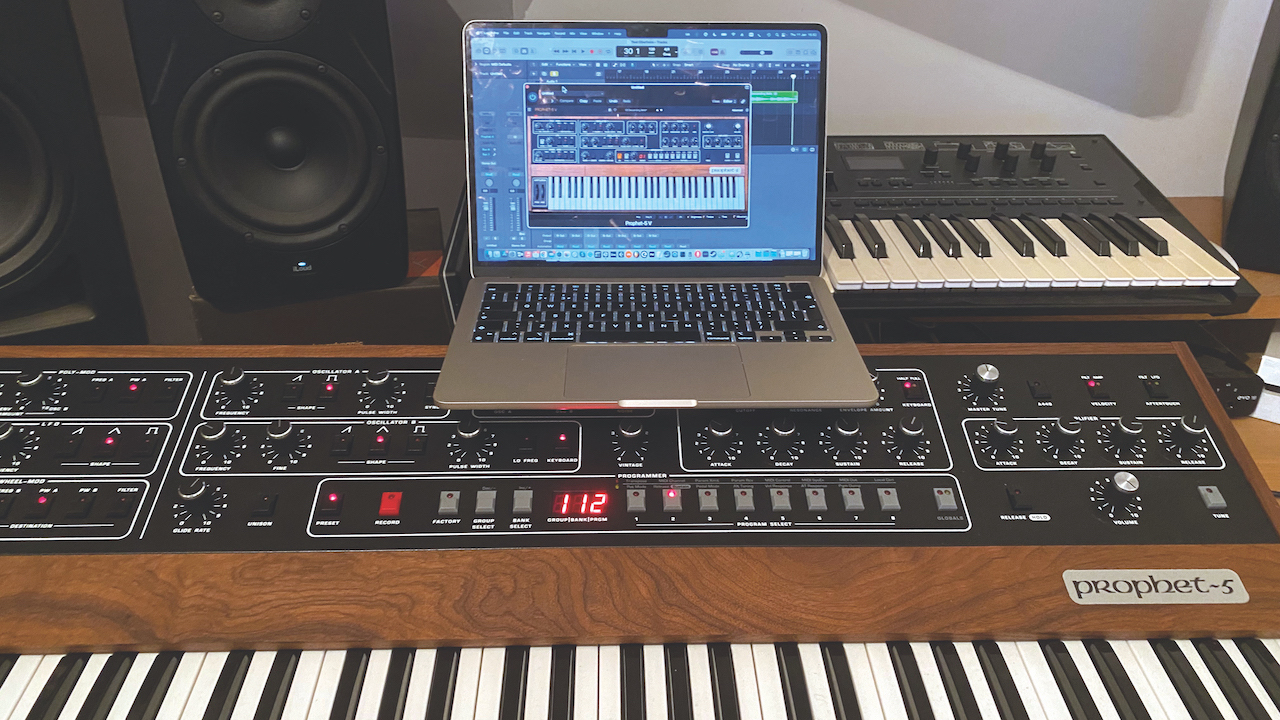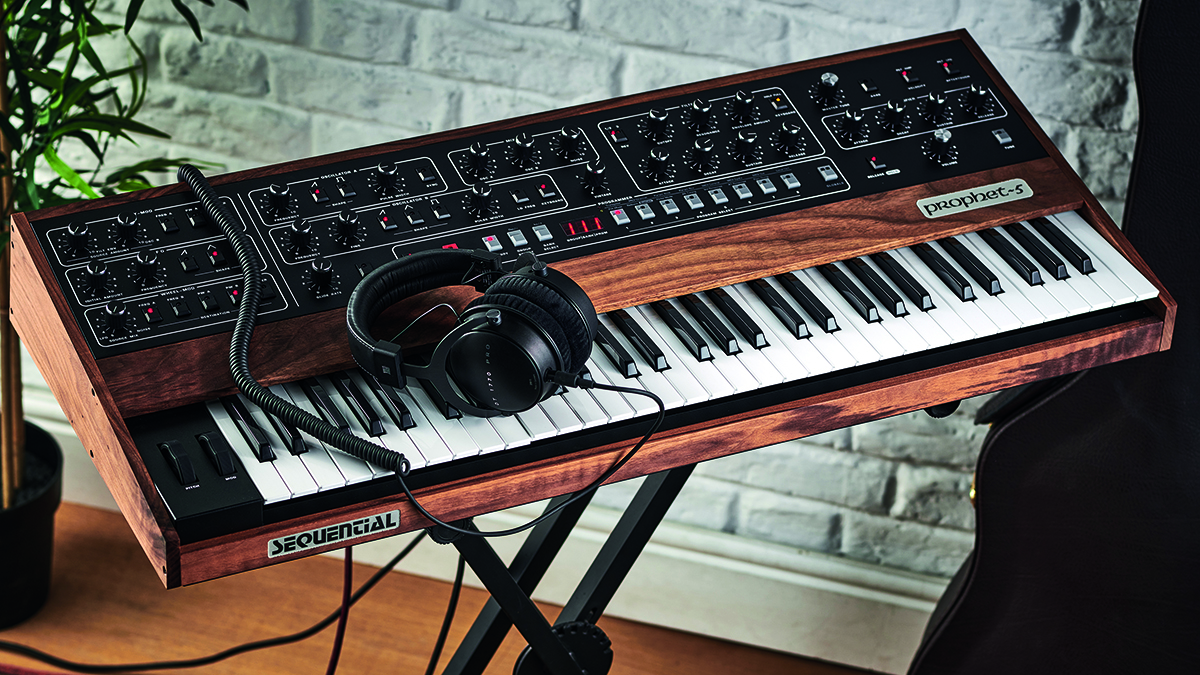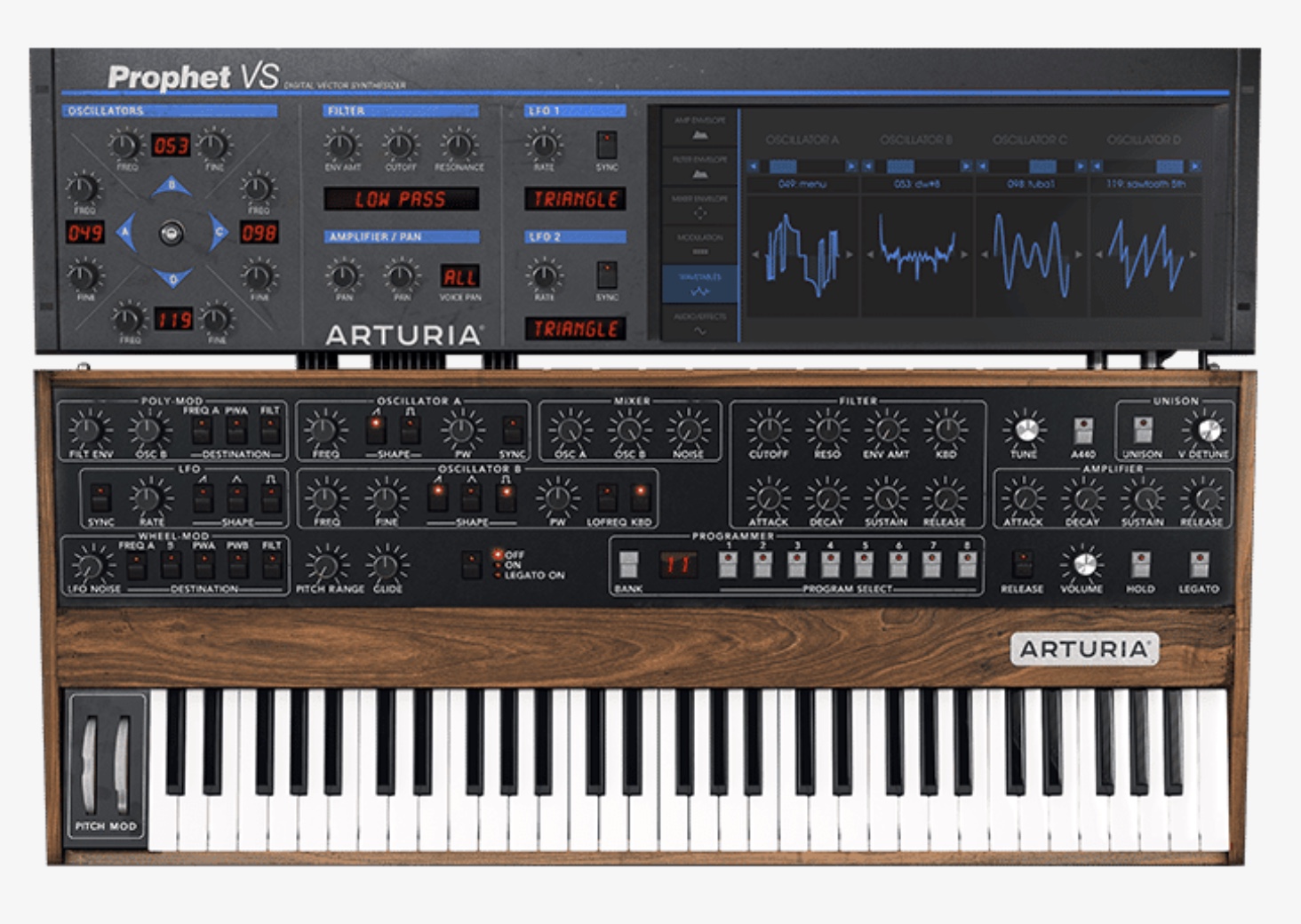The Great Synth Showdown: Sequential Prophet-5 Rev 4 hardware vs Arturia Prophet-5 V
The first round in our polyphonic hardware vs software shoot-out

This week on MusicRadar, we're stacking up hardware synths against their software counterparts as part of the Great Synth Showdown. In our first round, we pit the mighty Prophet-5 against Arturia's excellent emulation.
The original Sequential Prophet-5 might not have been the first actual polyphonic synth, but to many it felt that way. It was certainly the machine that elegantly put all the voices together under one roof, added the presets and made the whole package relatively portable. This meant that to many players of the time, this was the first real-deal polysynth.
Sequential made three versions of the synth during its initial run between 1978 and 1984. It shifted 6,000 units – which might sound like small fry, but the people who bought them weren’t your average Joes. From ABBA to Pink Floyd, Kraftwerk to Genesis, the machine quickly attained ‘legendary’ status.
Post ’84 and things became quite digital in the synth world and company turmoil forced the Sequential name out of Dave Smith’s hands. Still, in 2020 he, now with his name back, relaunched the Prophet-5 as the fourth revision. It's the currently available synth that we have for our comparisons here.
It’s a joyous machine to use, a proper piece of furniture
This machine is essentially identical to the original, with the ability to select between all three earlier revisions with a switchable filter. It’s a joyous machine to use, a proper piece of furniture with its wooden finish, totally at odds with the convenience of software, which is why there are so many of the latter options available for you.
For this, we’ve chosen the longstanding Arturia Prophet-5 V, itself currently one of the slickest-performing Prophet-5 emulations out there. There are others, of course, from the likes of Softube (Model 80) and u-he (Repro-5), but this is probably the most rounded, offering a great balance of authenticity vs newer features.

You can buy Prophet-5 V as part of the V-Collection bundle which, with everything else you get in that bundle, means it costs around £500. Or you can buy it on its own for $199. Either way, it’s worth remembering that it’s a lot less than the hardware version, which will set you back around £3500.
Want all the hottest music and gear news, reviews, deals, features and more, direct to your inbox? Sign up here.
When balancing hardware vs software like this, you have to take account of the fact that these aren’t really fair comparisons; you’re buying into two very different lifestyles. As computer musicians, we’re used to – spoilt by, even – the convenience of having so many classic polysynths on our desktops, and for not very much money.
Buy an expensive hardware polysynth and you’re buying into a different lifestyle where that instrument demands your attention, mostly to justify the outlay – it’s not something you’d just leave in your plugins folder untouched and ignored, put it that way.
But will that extra three grand really buy you a better sound? Time to find out…
Prophet-5: listen for yourself
We have four audio examples from our Prophet-5s for you to listen to above; for each patch, you'll hear the hardware first, then the software. There are a few direct comparisons because the Arturia version features many of the original presets as, of course, does the hardware.

It’s these that we have focused on as they offer more direct comparisons. But, to be honest, there are better sounds to be heard on both the hardware and software versions, so don’t judge either on the presets we’ve chosen – they’ve merely been picked for their crossover potential.
Our software signals have been generated within the DAW, with the hardware Prophet-5 being played directly into an Audient EVO 16 audio interface, with no additional hardware. The audio is as follows (from each of our Prophets):
1. 514 percussive piano
A Prophet-classic piano tone.
2. 542 Slow Syns Sweep
Loud and brash lead.
3. 536 Release repeat
Unusual saw lead.
4. 553 Descending bells


Andy has been writing about music production and technology for 30 years having started out on Music Technology magazine back in 1992. He has edited the magazines Future Music, Keyboard Review, MusicTech and Computer Music, which he helped launch back in 1998. He owns way too many synthesizers.
